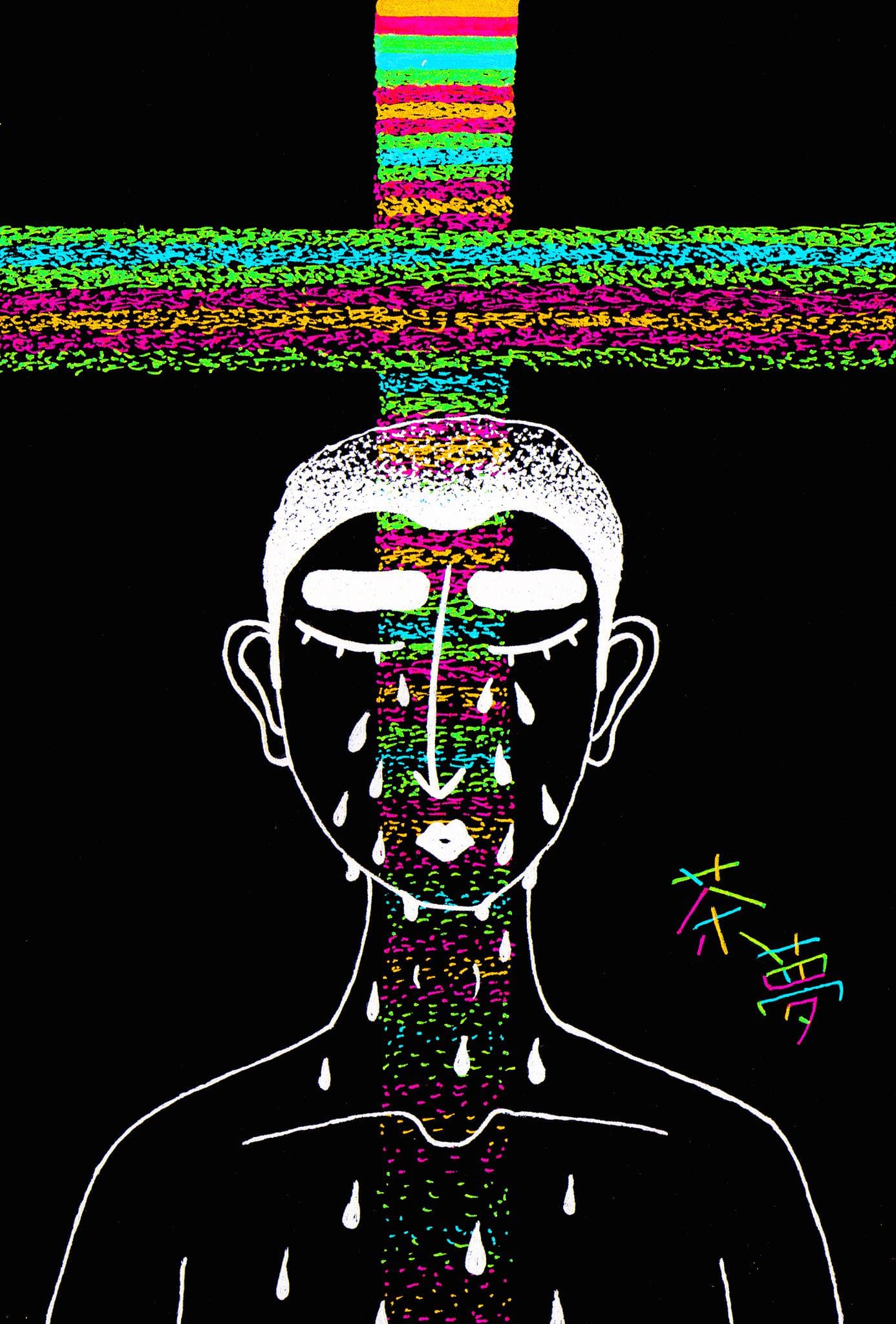Let’s be real: the phrase “personal is political” is truth. That is, personal experiences are the threads that weave directly into greater social and political structures. For many LGBTQIA people, though, the emotional weight of a constantly politicized and/or silenced existence is a pressure that seldom receives an outlet. At the Distillery Gallery in South Boston, Boston LGBTQIA Artist’s Alliance and featured artists Noah Grigni and presented “SanQtuary”. Featuring 17 local and national multidisciplinary artists, SanQtuary provided a safe space for a variety of works by artists of all genders, sexualities, races, and ethnicities to coexist, let their guard down, and celebrate the strength of the LGBTQIA community through art and performance.

Jory Cherry, T(ea) Tuesdays, oil on canvas (2017)
It is difficult to name a group of people whose bodies are more inherently politicized than those of trans folks. The reality of cross-sex hormone therapy for gender confirmation is frequently ignored, forgotten, or mystified as our society wrongfully regards this process as a one-time anatomical surgery. Jory Cherry, however, paints the unceremonious reality of hormone therapy abundantly clearly with their painting T(ea) Tuesdays. The self-portrait features Cherry bathed in pink light with the set-up for their treatment that Tuesday, sitting naked and upright on a couch with a needle in their left thigh, an open bottle of wine, and a cup of tea steeping at their feet. Such an image evokes common experiences of apartment life, which in turn reaffirms the necessary normality of the routine for this individual – and how it should be perceived as normal by the viewer.

“Flaming Queer,” Photographer: Sean Randall. Model: Tori Grace Nichols (2017)
While some artists chose to represent queer experiences through drawing or sculpture, photographer Sean Randall chose to immortalize his through captured images. In a collection of photographs featuring poet, performer, and activist Tori Grace Nichols, Sean highlighted the complex intersections of vulnerability, resilience, and sexuality in queerness. His images documented Nichols in a variety of settings and poses, from boxing in a gym to naked and tied up in rope. One image, , was particularly evocative. Featuring Nichols naked and looking arrestingly at the camera on top of a bundle of wood, the photograph had undeniable gravity; however, an accompanying statement from Nichols transcribed the expression written on their face to words:
“Our differing identities create an intriguing dynamic. The photographer considers the composition of the piece, and I consider its underlying question: What does it mean to have a queer brown person as kindling this time?”

Installation View, Adrian Pulido
Beyond these small installations, several stand-alone pieces filled the gallery space. Disjointed, they displayed personality, yet unified they told a story. Upon inspection of these pieces, their titles, artist names, or even descriptions were not always clear. In fact, most of the pieces lacked any description at all. At first, it was frustrating to navigate an exhibition without wall text, but it became apparent that this was an intentional component of the space. Queer individuals are constantly forces to explain themselves to the world-to continuously come out, to continuously assert who they are. SanQtuary removed the obligation of explanation and, in the process, bestowed the art and the artists to simply exist – and look unquestionably beautiful doing it.

Samu Boyne “「十字架の涙」(Tears of the Cross),” traditional and digital media.
SanQtuary is on display at the Distillery Gallery (516 E 2nd St, Boston, MA) through December 28, 2017.
SanQtuary features work by the following artists:
Boon, Rashod Blades, Samu Boyne, Jory Cherry, Aaren Johnson Davis, Noah Grigni, YoAhn Han, Ryan Kelso, Xena Lander, MonteQarlo, Tori Grace Nichols, Adrian Pulido, Sean Randall, Jairo Rodriguez, Lenny Schnier, Emmett Stoffer, Ana Zeghibe
For more information, visit Boston LGBTQIA Artist Alliance

Flyer for Opening Reception
